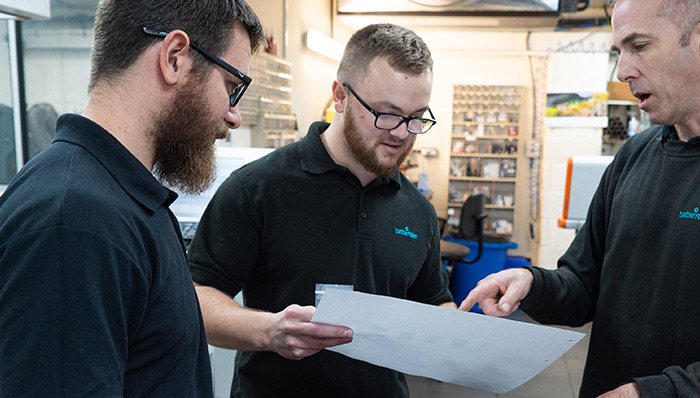The Role of Tech in Monitoring Stamping Processes for Reliability
In the metal stamping industry - where precision and reliability are non-negotiable - advanced technology plays a pivotal role in monitoring and...
Brands are choosing us to partner with them to bring innovate products to market quickly and cost effectively.
Working on a Prototype and need expert input, why not get in touch and talk with our experts.
2 min read
Batten & Allen Feb 12, 2024 11:08:33 AM
In the precision-driven world of metal stamping, the pursuit of zero defects Isn’t just an ambitious goal but a necessary standard. After all, achieving perfection in stamping is crucial for industries such as healthcare and aerospace, where the slightest imperfection can lead to significant consequences.
There are several strategies and practices that are essential in the pursuit of zero-defect stamping. Let’s take a closer look…
Zero-defect stamping is a manufacturing philosophy aimed at reducing, and ultimately eliminating, defects in the stamping process. It involves a series of systematic approaches and techniques designed to identify potential sources of errors and implement preventive measures. This principle is rooted in the belief that every defect is preventable, and that continuous improvement is key to achieving perfection.
The integration of advanced technology is a cornerstone in the pursuit of zero defects.
State-of-the-art stamping presses - equipped with precision engineering capabilities - ensure high accuracy and consistency in production. Technologies such as laser cutting and computer-aided manufacturing (CAM) systems allow for intricate designs and precise execution, minimising the likelihood of errors.
To eliminate defects, quality control is key. This involves rigorous inspection and testing at every stage of the stamping process.
From initial material inspection to final product testing, each component is scrutinised for any deviations from the required specifications. Techniques like statistical process control (SPC) are employed to monitor production processes and detect variations that could lead to defects.
The role of skilled personnel cannot be overstated in the zero-defect stamping process. Regular training and involvement of employees will ensure that they are not only skilled in operating advanced machinery, but also vigilant in detecting and addressing potential issues. In any manufacturing environment, a culture of quality and responsibility among the workforce is essential.
Adopting a mindset of continuous improvement is also crucial in the zero-defect philosophy.
Lean manufacturing principles, such as waste reduction and process optimisation, play a significant role in this. By continually refining processes and eliminating inefficiencies, manufacturers can reduce the chances of defects occurring.
Compliance with industry-specific standards is vital in zero-defect stamping, involving guidelines for quality and performance tailored to various sectors.
For example, in the automotive industry, standards like IATF 16949 focus on safety and performance, essential for automotive parts where defects can have serious implications. In electronics, IPC-A-610 standards guide electronic assemblies, emphasising soldering quality and component integrity. Similarly, aerospace standards like AS9100 ensure components withstand extreme conditions, crucial in applications where error margins are minimal.
Adhering to these standards involves rigorous testing and inspection, ensuring stamped components meet specific industry criteria. This not only guarantees product functionality and safety but also enhances a manufacturer's market credibility.
In sectors where reliability is paramount - such as medical or military - meeting these standards underscores a commitment to quality and reliability, essential for customer trust and long-term success.
The pursuit of zero-defect stamping requires a commitment to advanced technology, stringent quality control, a skilled workforce, and a culture of continuous improvement.
While achieving absolute zero defects is an ambitious goal, aiming high pushes manufacturers to elevate their standards, enhance product quality, and ultimately, satisfy the stringent demands of their clients.
In the metal stamping industry, aiming for perfection is a strategy that recognises more than avoiding errors; It sets the benchmark for excellence.
Learn more about achieving consistent stamping quality here.

In the metal stamping industry - where precision and reliability are non-negotiable - advanced technology plays a pivotal role in monitoring and...

Achieving reliability in metal stamping is a complex challenge that industry leaders tackle through a combination of best practices, technological...

Understanding and applying reliability metrics is crucial for ensuring the quality and consistency of stamped products.